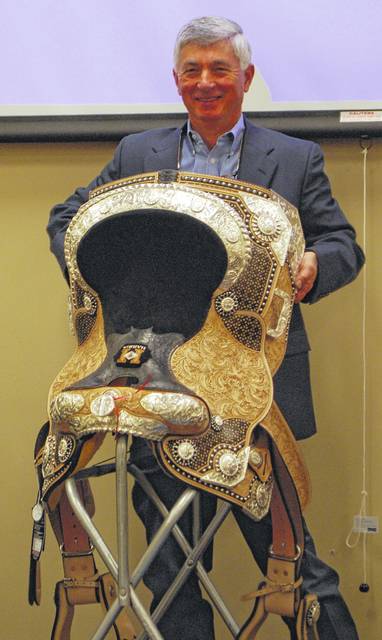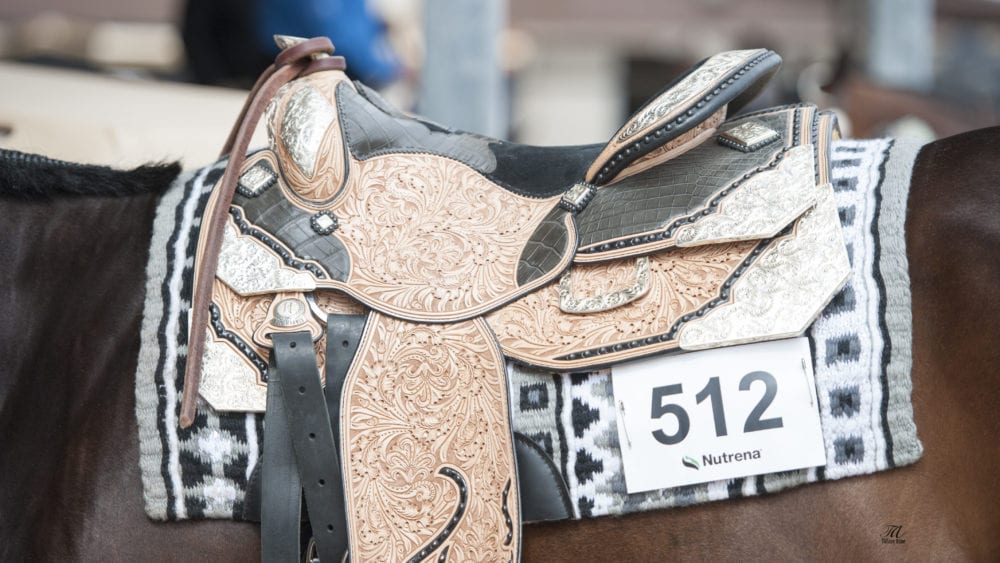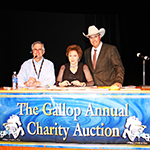The comfort of a horse and rider is crucial. Without the proper fit of a saddle, it could affect the horse and rider’s overall performance. GoHorseShow interviewed one of the top saddle makers in the industry, Phil Harris of Harris Leather & Silverworks, about the importance of fitting a saddle correctly. Harris shares some of his tips on saddle fitting and what the process would look like for the typical equestrian. A properly fitted saddle will be beneficial in both the practice and the show ring, plus it is not as hard to do as one might think.
 Q: How important is it for a saddle to fit a horse and rider properly?
Q: How important is it for a saddle to fit a horse and rider properly?
A: It is essential to fit the rider and the horse. Fitting the rider will give that person the confidence, comfort, and the ability to control or show that horse accurately. It will enable the rider to concentrate on showing the horse without the worry of being positioned correctly in the saddle seat. Fitting the horse is also very important but a much more difficult task. Most people can only afford one saddle, and that saddle should be very versatile in fitting a variety of horses. When the saddle fits both the horse and rider, both are more comfortable in doing their jobs and can accomplish more.
Q: What process is needed to ensure that a saddle fits correctly?
A: Without getting too technical, a rider should visually inspect the saddle position on the horse. First, look at the area beneath the horn over the horse’s neck. Make sure the swell of the saddle is not down on the neck.
Next, with the saddle tightly cinched, grab the horn and push and pull to ensure that the saddle does not roll from side to side too much. Push your hand under each side of the front of the saddle to make sure that the area under the swell is contacting the wither area and not putting unnecessary pressure on the shoulders.
Next, make sure the saddle cinch straps and girth are up behind the elbow of the horse and not pinching when the front legs move. Also, the back of the saddle should not be rubbing into the flanks. When the rider is sitting in the seat, the area behind the seat should settle in on the horses back.
 Q: What are some commonly overlooked aspects of fitting a saddle?
Q: What are some commonly overlooked aspects of fitting a saddle?
The saddle pad is the connecting piece that helps the saddle do its job of fitting. No one can have a saddle that perfectly fits every horse at every age. There are different thicknesses and types of saddle pads that will help you make your saddle fit better and be more comfortable for the horse. If you have a saddle fit problem, it can most likely be alleviated with the proper saddle pad. There are wither pads that can change how your saddle fits your horse.
Q: What are the best options for people on a lower budget?
A high-quality, handmade saddle is the best option for both the rider’s and horse’s comfort. However, I would suggest looking for a used saddle when on a budget. I always have a great selection of beautiful used saddles that can save the buyer a great deal of money. One thing to remember about a Harris saddle: it is an investment. It will be the longest-lasting part of your horse gear and will lose less money, percentage-wise, throughout the years than most other items in your horse program. They hold their value very well.
 Q: What parts of a horse are examined when determining the fit of the saddle?
Q: What parts of a horse are examined when determining the fit of the saddle?
The withers, neck, hip, and along the back are the areas of saddle contact. These are very different from horse to horse. Finding the right saddle that commonly addresses each of these areas will make both the horse and rider more comfortable.
Q: What advice do you have for people with regard to saddle fitting?
First and foremost, do not overthink saddle fitting. Most fit problems can be addressed with the saddle pads. I cannot emphasize enough the fact that your saddle should be versatile and fit a wide range of horses through the years as they age and change.
Q: Is there anything else that you would like to add?
I think this covers most of the common aspects of saddle fitting. One thing to remember; choosing the right saddle maker will eliminate most fit problems. As a seasoned maker, I have adapted my saddles to the changes needed to fit a variety of horses throughout the years. A glance at the saddles in the western classes at today’s shows will tell the prospective buyer which saddles fit and perform.
Q: Thanks, Phil!
CLICK HERE for more information about Harris Leather & Silverworks.








